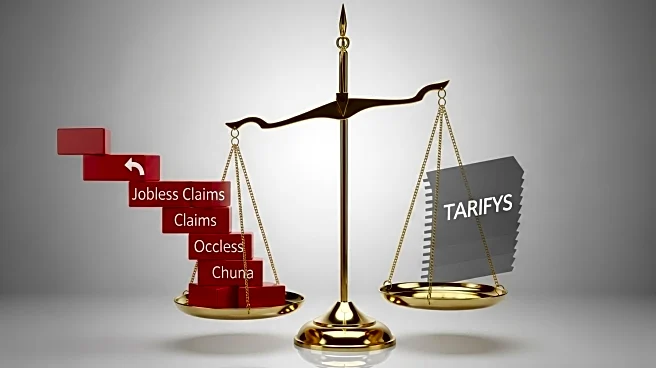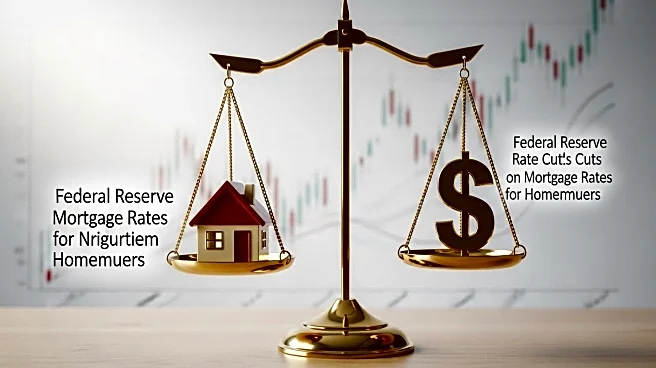What is the story about?
What's Happening?
Mortgage rates in the United States have declined to their lowest level in nearly a year, following the Federal Reserve's decision to cut interest rates by a quarter point. The average rate for a 30-year fixed mortgage is now 6.26%, down from 6.35% the previous week. This reduction in borrowing costs has led to a surge in refinancing activity, as homeowners seek to take advantage of the lower rates. The Fed's rate cut, driven by concerns over the labor market, is expected to be followed by additional cuts later this year.
Why It's Important?
The decrease in mortgage rates could provide relief to potential homebuyers facing affordability challenges, potentially boosting the housing market. However, the economic uncertainty that prompted the Fed's rate cut may deter some buyers. The lower rates also impact existing homeowners, many of whom hold mortgages with rates below 6%, reducing their incentive to sell or move. This dynamic could influence housing supply and demand, affecting market conditions.
What's Next?
As the Federal Reserve continues to adjust interest rates, the housing market may experience further changes. Potential buyers and sellers will need to consider the implications of fluctuating rates on their financial decisions. The broader economic context, including labor market trends and inflation expectations, will also play a role in shaping future developments in the housing sector.
AI Generated Content
Do you find this article useful?














